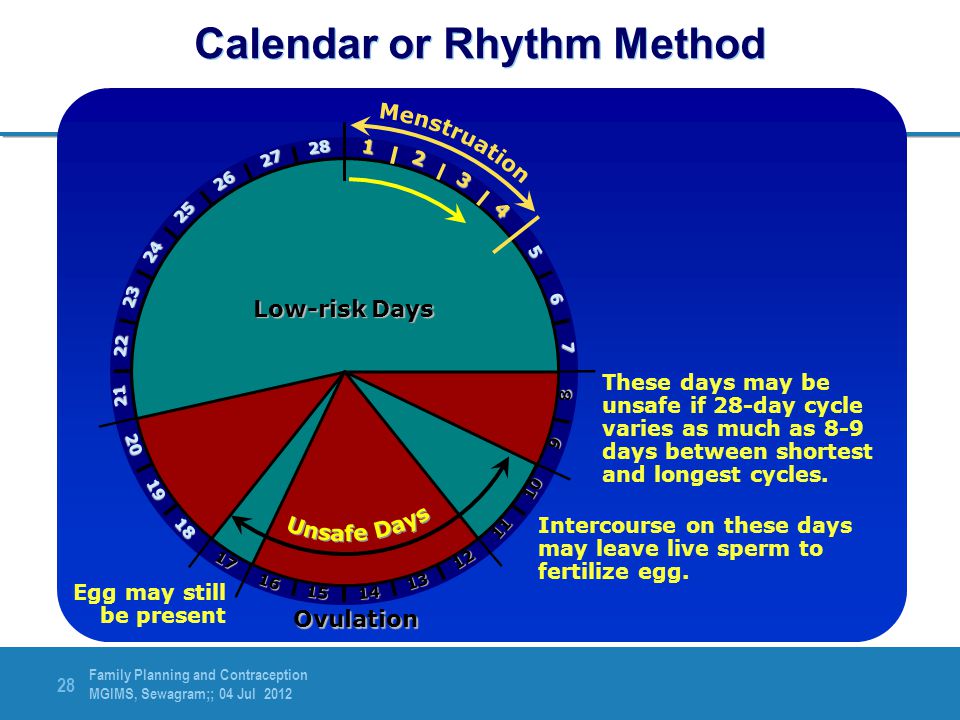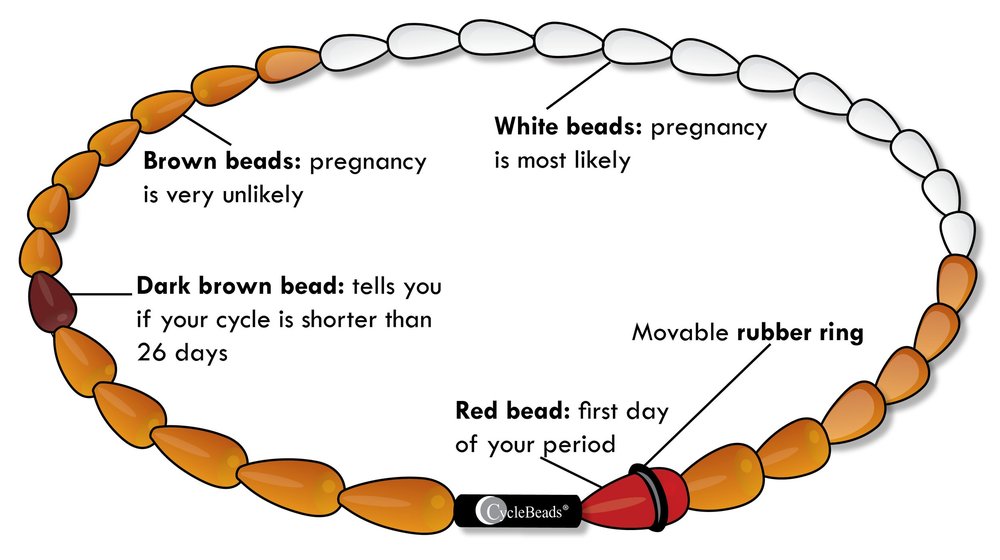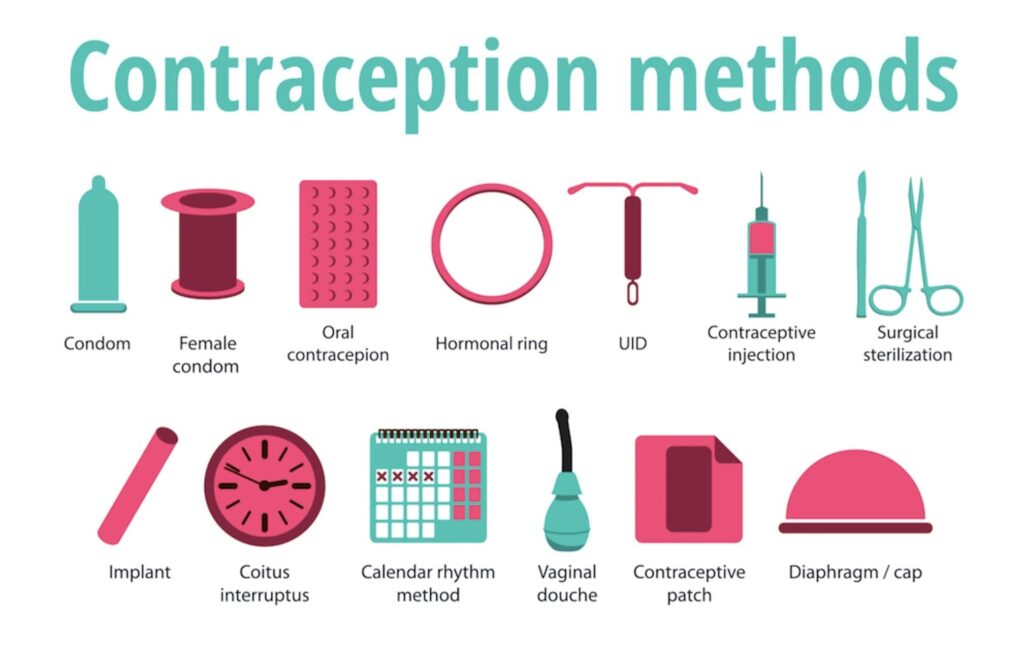Table of Contents
ToggleFamily Planning
Family Planning is defined as a process through which individuals, couples make up an informed choice on how many children to have, when to have and how often to have so that each child born is expected and properly catered for in all ways.
For instance, basic needs like good health, education, shelter, and all essential needs of humans are available.
This involves planning and proper birth spacing according to wishes rather than by chances. Birth spacing promotes the health of the mother, children and father.
Consent for family planning services
No verbal or written consent is required from parent, guardian or spouse before the client can be given family planning services except in cases of incapacitation (intellectual disability). Clients should give written consent to permanent family planning methods.
Setting of family planning clinics
Service delivery points where a health provider comes into contact with a potential or actual client
- Social mobilization events for any health services
- Youth clubs and schools through family life education activities
- Women and men organized clubs/groups
- Work places
Where to get family planning services
- Facility based outlets such as hospitals, health centers and dispensaries
- Outreach services including mobile clinics and workplaces
- Community based outlets e.g. community based distribution, drug shops and dispensing machines
- Social marketing
- Private sector facility such as clinics, maternity and nursing homes, pharmacies and drug retail shops
Counseling
In order to promote informed choice, all clients seeking contraceptives are entitled, given accurate and adequate information about family planning methods available in the common settings. This is important for the initiation and continuation of family practice. Methods (of choice) of clients will be done individually and in a dignified manner. The discussion between the service provider and client must be private, confidential and should never include incentives or coercion for the adaptation of any method.
Initial counseling should include the following:
- Discussion of client’s reproductive goals, previous knowledge and/or experience with any method
- Showing the FP methods available
- Information on how each method prevents pregnancy
- How effective the method is and what conditions make I effective
- Method failure
- Common side effects
- The follow-up regarding each method
- Where the method can be obtained
- Importance of physical and pelvic examination
- Information on HIV/AIDs/STIs in relation to F/P
- HIV testing and screening of STIs
- Symptoms of breast and cervical cancer including available services for screening
- Clarification of misconceptions or rumors the client may have about each type of method
Subsequent counseling will aim at promoting and encouraging continued use of a method and should include:
- A review of the client ‘s satisfaction or problem with the method
- A review of the client ‘s understanding of user instructions
- Dispelling rumors and/or misconceptions, if any
- In indicated, a review of change of the client’s reproductive goal necessitating the need for a long term or permanent method
- Counseling on STIs and HIV/AIDs
- Possible method failure
- Information of common symptoms of breast and cervical cancer including available services for screening
- Counseling is also important:
- Where a contraceptive method has failed
- There is regret for having had a permanent method
- In cases of rape or defilement
- Where there are is need for referral for appropriate care
Screening
After a thorough counseling a client should then be ready to choose a contraceptive method. The next step is to screen for contraceptive use.
- Clients opting for hormonal method should have the relevant health, social history taken and physical assessment carried out on the first or subsequent visits. Where indicated, do a complete physical check up to rule out contra-indications to method use. Where is not possible or necessary to perform routine physical assessment, the client should be screened by a qualified staff or FP trained service provider using a standard checklist to initiate or resupply oral contraceptive or Depo Provera. After screening, the important findings should be communicated to the client including any issues she/he may want clarification on. The client will then be provided with the appropriate or preferred method and important findings should be recorded according to the guidelines.
Routine physical or pelvic examinations is not obligatory for initiating or re-supply of oral contraceptives or Depo Provera, an examination could be valuable for reproductive health and may help to rule out contra-indications to methods and/or establish the presence or absence of infections or cancer.
Where selected physical assessment or laboratory tests are indicated and is not possible to carry them out at a particular clinic, clients should be referred to a health unit equipped to provide the assessment test.
Importance of family planning
a) To the mother
- Allows mother to recover physically and mentally from the effects of previous pregnancy
- Offers ample time for a woman to actively participate in productive activities like farming and business.
- It increases social bondage between the mother and her baby
- It helps to reduce on maternal mortality and morbidity the couples due to pregnancy related complications
- It promotes a happy marital life and enjoyment between the couples without fear of getting unwanted pregnancy.
b) To the child
- Child receives adequate emotional and social support and as a result gets emotional maturity and stability
- Allows adequate nutrition of the baby while in the womb and hence a healthy newborn
- There is reduction of malnutrition as there is no early weaning and likely to have enough food for the child
- The child gets fewer infections since immunity is
c) To the father
- Reduces domestic violence in a home
- Ability to meet basic needs like foods, medical care
- Reduces the cost of living in a home hence the father is able to invest in productive
d) To the Community
- Healthy and productive people who enhance community stability and harmony
- Reduces overcrowding hence available land can be maximize for productivity
- There will be increased socio-economic development
- Presence of bad characters in the community like street kids, smokers and other bad group in the community since parents have adequate time to provide for their
e) To the Nation
- Reduces rapid population growth rate
- Reduces the country‘s dependence on foreign aids
- The government will be able to provide better social services and infrastructures like roads, health facilities
- It is easy to budget for the people since the number of resources to the population is
Available family planning methods in Uganda
The family planning methods can be broadly classified into: –
- Natural family methods.
- Hormonal /Artificial family planning.
1. Natural /traditional methods
- Calendar/rhythm
- Basal body temperature
- Cervical mucus method
- Lactation amenorrhea methods
- Abstinence
- Withdrawal/coitus interrupters
2. Artificial methods
- Barrier methods
- Spermicides
- Condoms
- Intrauterine contraceptive devices (IUCDs)
- Diaphragm
b) Hormonal methods
- Oral pills
- Combined oral contraceptives
- Progesterone only pills
- Emergency contraceptive pills
ii. Implants
- Implanon (1 rod capsule)
- Jadelle (2 rod capsules)
- Norplant (6 rod capsules)
iii. Injectable contraceptives
- Depo Provera
- Injector plan
- Sayana press
- Noristerat
c) Permanent methods
- Tubal ligation (tubectomy) for women
- Vasectomy for men
Natural methods of family planning
These are also known as fertility awareness method. They are based on the following physiological conditions.
- The lifespan of a sperm is 24 hours
- The lifespan of an ovum is 48 hours
- Menstruation takes place between 1-16 days before the next period
General advantages
- They are safe with no side effects
- Cheap
- They are acceptable to many groups and religious that opposes the modern methods
- They teach women about their own menstruation cycle and fertility
- Couples have control over their methods
- Help in planning a pregnancy
General disadvantages
- Some require substantial teaching before use
- It is difficult as records on several cycles ought to be kept for proper references
- Difficult to use if the period are irregular
- Requires adjustment to sexual behaviors
- Requires co-operation between the partners which in most cases is difficult
- Do not protect against STIs/HIV/AIDs
Fertility awareness method
Fertility awareness methods of family planning involve identification of the fertile days of the menstrual cycle (when pregnancy is most likely to occur) and avoiding sexual intercourse (or using barrier methods) during these days. The fertile days of the menstrual cycle can be determined by one of the following methods:
- Basal body temperature (BBT)
- Cervical mucus
- Symptom- thermal (a combination of cervical mucus and BBT methods)
- Calendar (rhythm) or Standard Days method, including cycle
A woman or couples who are planning to use fertility awareness methods need special training from a trained counselor in family planning.
Indications
Any woman or couple who is willing and motivated to observe, record and interpret fertility signs daily.
- Women who find other contraceptive methods unacceptable for various reasons including religious beliefs
- Women who are unable to use some other methods for health reasons
- Couples who are willing to abstain from sexual intercourse (or use condoms) for more than one week during each days
Contraindications
There are no medical conditions that are worsened with the use of fertility awareness methods. However, there are some conditions that make their use more difficult. If these conditions are present, the method can either be delayed or the provider should offer special counseling to ensure the correct use.
These conditions include:
- Breast feeding (especially until menses return)
- Less than three postpartum menses
- Irregular vaginal bleeding
- Abnormal vaginal discharge
- Disease that evaluates body temperature

Calendar /rhythm method
- This is the only method approved o the Roman Catholic Church
- Before starting to use this method, one needs to have an accurate record of menstrual cycles for about 6-8 months
- The failure rate is between 20-30%
- The method is referred to as ―safe days‖ because it aims at identifying days with least chance of conception
- The woman should provide a record of her menstrual cycles to the health worker and then go into the calculation as shown below.
Calculating the fertile period
Fertile period is the time of the cycle when a woman has the ―highest ―chances of conception.
Procedure
- Record the length of each Length of a cycle is the time between the first day of one menstruation period and the first day of the following period
- Identify the shortest and longest cycle
- Get the first fertile day (FFD) by subtracting 18 from the shortest cycle (16 + 2 days of sperm survival)
- Get the last fertile day (LFD) by subtracting 11 from the longest cycle (12-1 day of ovum survival)
Examples
A woman with a regular cycle of 28 days duration report to the family planning clinic and has opted for calendar method. Demonstrate the ability to calculate this in order for her to start using the method.
- Record the length of each menstrual cycle: This is the time between the first day of one menstruation period and the first day of the following period.
- Identify the shortest and longest cycles: Determine the cycle with the fewest days as the shortest cycle, and the cycle with the most days as the longest cycle.
- Calculate the first fertile day (FFD): Subtract 18 from the duration of the shortest cycle. This accounts for the fact that sperm can survive for about 2 days.
- Calculate the last fertile day (LFD): Subtract 11 from the duration of the longest cycle. This considers the fact that the ovum (egg) can survive for about 1 day.
Here’s an example to demonstrate how to apply this method:
Examples
- A woman with a regular cycle of 28 days duration report to the family planning clinic and has opted for calendar method. Demonstrate the ability to calculate this in order for her to start using the method.
Given: Number of cycles: 28 days
To calculate:
Shortest cycle: 28 – 18 = 10th day
Longest cycle: 28 – 11 = 17th day
Interpretation:
The woman is highly fertile between the 10th and 17th days of her cycle.
Comments/Remarks:
- It is recommended to avoid sexual intercourse between the 10th and 17th day of her cycle.
- It’s advisable to use condoms or another form of contraception as a backup method.
2. A woman with irregular cycle whose shortest cycle is 25 days and the longest cycle is 32. Calculate and interpret he finding to the client
Solution
Given number; Shortest cycle =25 days Longest cycle=32 days
Therefore:
FFD=shortest cycle=shortest cycle-18 =25-18 =7th day
LFD=longest cycle-11 =32-11 =21st day
Interpretation
- A woman is very fertile between 7th-21st day of every cycle
- Avoid sexual intercourse between 10th-17th day of her cycle
- To always use condoms or any other family planning method as a dual or backup
Self-help assessment
Demonstrate your ability to calculate & interpret the following to the client:-
- A client with cycle of 29 regular
- A client with cycles of 24 & 30 days respectively (irregular cycles)
- A client with 27 day cycle (regular)
Advantages
- No cost
- No side effects
- Refer to general advantages of natural methods of family planning
Disadvantages
- Difficult to calculate the safe period reliably
- Needs several months training to use these methods
- Compulsory abstinence from sexual act during certain periods
- Not applicable during lactation amenorrhea when the periods are irregular
- Does not protect against STIs including HIV/AIDs
Lactation amenorrhea method
- Immediately after birth, there is a period of naturally decreased fertility which can be prolonged by regular breastfeeding. The hormone responsible for the suppression of fertility is prolactin that controls milk production.
- The effect of breast feeding on reducing fertility awareness is well known. However, LAM is a temporary 9 short- term) method of contraception. It is highly effective for the first six months after delivery, providing the woman breastfeed fully and remains amenorrhoeic.
- In non- lactating mothers, prolactin gradually decreases within weeks after child birth reaching normal levels in about 4 weeks post-partum.
- Regular nipple stimulation by sucking is necessary to maintain milk production and lactation amenorrhea method.
- LAM may last up to 24 months during a regular prolactin release which inhibits the ovarian functions
- When all three criteria of LAM are met, it is about 98%
Indications
- Women who are fully breastfeeding and
- Who are amenorrhoeic (no menses) and
- Whose baby is not older than six months
Fully breastfeeding means:
- Breast feeding whenever the baby desires (at least every four hours)
- Night time feeding (at least every six hours)
- Not substituting other food or drink in place of breast milk
Who cannot use LAM/contraindications?
- Women whose menses have returned.
- Women whose babies have turned six months old.
- Women who have introduced supplementary feedings.
Note: Women with HIV should be counseled about the infant feeding options to reduce risk of mother-to-child transmission and be supported in their choice. Women without reliable access to safe alternative feeding options should be encouraged to breast feed exclusively for six months
Standard Days Method (Moon beads/cycle beads)
The Standard Days Method® is a fertility awareness-based family planning method that identifies a fixed fertile window for women with cycles that are between 26 and 32 days long. For women with cycles in this range, the method identifies days 8 through 19 as potentially fertile days. A user simply tracks the start date of her period and the days of her cycle to know if she is on a day when pregnancy is possible or not.
What are moon beads?
- They are string of colored beads
- The colors of moon beads help you know the days when you can get pregnant
- They also help you know the days you are not likely to get pregnant
- To prevent a pregnancy do not have sex on the days you can get pregnant, or use a barrier method.
Note: Moon beads are based on a natural method of family planning that is 95% effective when used correctly. This means that only 5 out of 100 women may become pregnant when the method is used correctly.
Modes of action
If a woman wants to prevent pregnancy using this family planning method, then she should avoid intercourse or use a back-up birth control method such as condoms during her fertile days (days 8-19). The patented Cycle Beads tools help a woman use this method by tracking her cycle, identifying her fertile and non-fertile days based on when her period started, and confirming that her cycles are in range for effective use of this family planning method.
Moon beads and the menstrual cycle
- Moon beads represent a woman‘s menstrual cycle
- Each bead is a day of the
Note: The menstrual cycle is not the same as the woman‘s period. The period is when a woman has menstrual bleeding while cycle includes all days from the start of one period to the day before the next period.
Indications/Eligibility/who can use it
- Couples who communicate well and agree not to have unprotected sex when the woman is likely to get pregnant
- Women who have failed to use other modern methods
- Women who have cycles that is between 26 and 32 days
Advantages
- Refer to natural methods
- More than 95% Effective
- Side-Effect Free
- Easy to Use
- Inexpensive
- Educational & Empowering
How to use moon beads
- The day you get your period, move the ring to the RED bead.
- Also mark that day on the calendar
- Move the ring, one bead each day
- Do not have unprotected sex when the ring is on any WHITE bead. You can get pregnant on those days
- You can have sex when the ring is on any brown beads. You are not likely to get pregnant on those days
- Move the ring to the RED bead again when your next period starts. Skip over any beads that are left.

When to contact the healthcare provider
- Had unprotected sex on a WHITE bead If she thinks she might be pregnant because she has not gotten her period.
- If she gets her period before she reaches the DARK BROWN beads, this means that her cycle is shorter than 26 days.
- If her period does not start by the DAY AFTER she reaches the last brown bead, this mean that her cycle is longer than 32



Thanks so much for the update
THANKS for making my reading easy